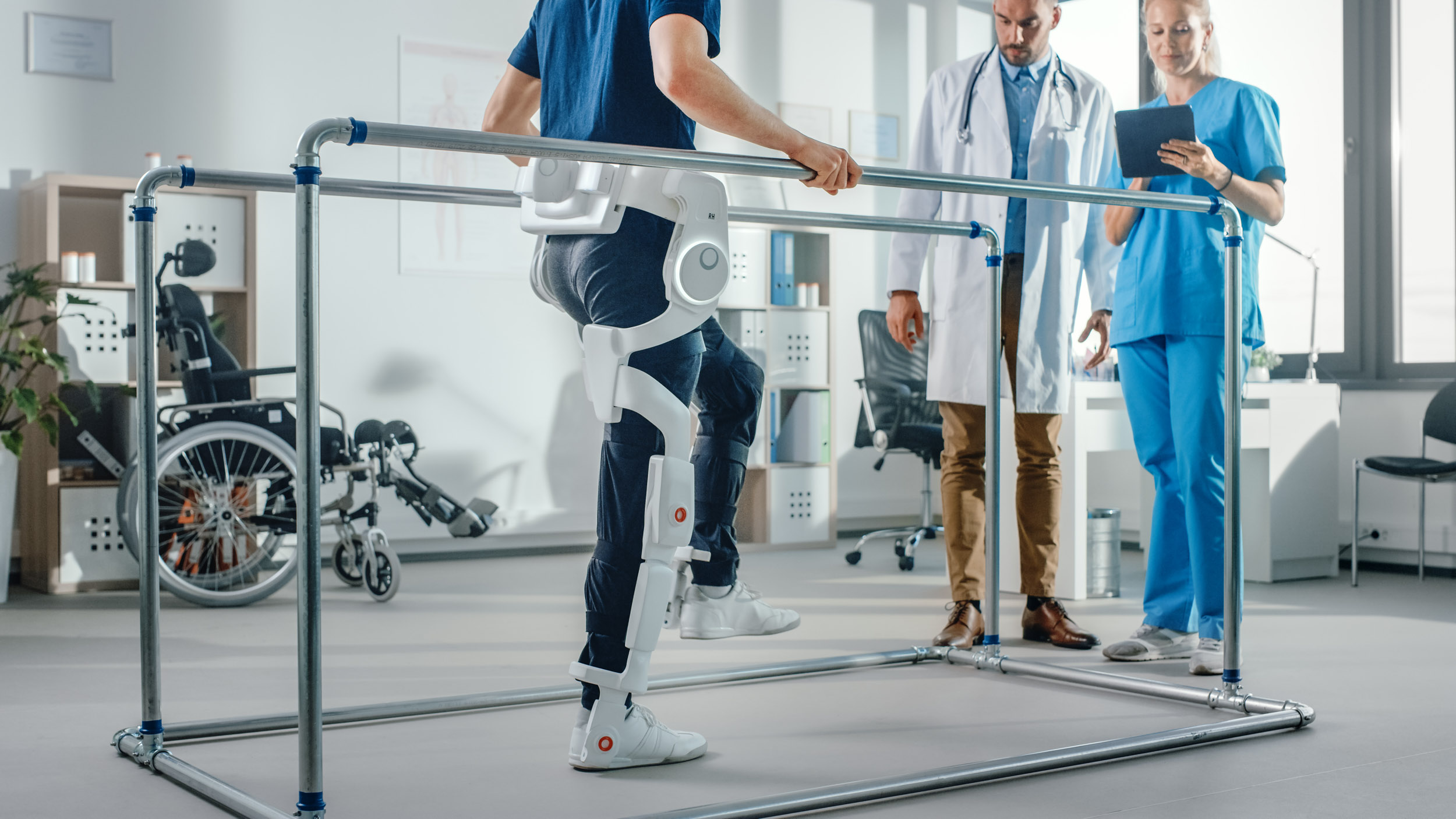
Technologie & Entwicklung
Technology in therapy

Miriam Keifert
Product Manager Clinical & Scientific, THERA-Trainer
Challenges of integrating technology into therapy
The digital revolution has transformed almost all aspects of our lives and the therapy fields are no exception. The integration of technology into therapeutic practice presents both opportunities and challenges. While advancing digitisation and automation in therapy offer promising opportunities, therapists, researchers and healthcare systems face a variety of complex challenges. This article sheds light on some of the key facets.

Individual adaptation and patient needs
One of the key challenges in integrating technology into clinical practice is for therapists to take into account the individuality of each patient. Every patient has unique needs and health goals that require tailored treatment. Technology can help deliver individualised treatments at the highest level, but this requires a deep understanding of the patient’s history and careful selection of the right technologies.
One of the key challenges in integrating technology into clinical practice is for therapists to take into account the individuality of each patient. Every patient has unique needs and health goals that require tailored treatment. Technology can help deliver individualised treatments at the highest level, but this requires a deep understanding of the patient’s history and careful selection of the right technologies.
Ethics and personal contact
When expertly used, technology can help to make the treatment process more efficient, but at the same time there is a risk that human contact and the emphatic connection between therapist and patient are neglected. The relationship between therapist and patient (therapeutic alliance) is essential for treatment success and it is important to ensure that technology supports and does not diminish this relationship.
When expertly used, technology can help to make the treatment process more efficient, but at the same time there is a risk that human contact and the emphatic connection between therapist and patient are neglected. The relationship between therapist and patient (therapeutic alliance) is essential for treatment success and it is important to ensure that technology supports and does not diminish this relationship.
Selection and evidence-based technology
The multitude of available technologies is overwhelming and adds to the complexity. In therapeutic practice, we need to select carefully and consider which technologies are best suited to patient needs. The selection should be based on scientific evidence, but also on clinical validation to ensure that the technologies actually contribute to improving patient outcomes. Only then do they fulfil their purpose.
The multitude of available technologies is overwhelming and adds to the complexity. In therapeutic practice, we need to select carefully and consider which technologies are best suited to patient needs. The selection should be based on scientific evidence, but also on clinical validation to ensure that the technologies actually contribute to improving patient outcomes. Only then do they fulfil their purpose.
Data protection and patient trust
Sensitive health information and data have always been collected in therapeutic practice. In addition, these data are now stored electronically en masse. The incorporation of technology – whether through microchip sensors in wearables or robotic devices – therefore requires strict safeguarding of data in order to maintain data protection and patient trust. The collection and storage of data must be transparent and comply with applicable data protection regulations.
Sensitive health information and data have always been collected in therapeutic practice. In addition, these data are now stored electronically en masse. The incorporation of technology – whether through microchip sensors in wearables or robotic devices – therefore requires strict safeguarding of data in order to maintain data protection and patient trust. The collection and storage of data must be transparent and comply with applicable data protection regulations.
Cost efficiency and accessibility
While some technologies are promising, they could also come at a high cost. As a practitioner, it is important to consider carefully whether the benefits of the technology justify the investment. Due consideration should also be given to whether the technology is accessible to all patients or whether it could reinforce social inequalities.
While some technologies are promising, they could also come at a high cost. As a practitioner, it is important to consider carefully whether the benefits of the technology justify the investment. Due consideration should also be given to whether the technology is accessible to all patients or whether it could reinforce social inequalities.
Training and development
Given all of the above, the successful use of technology requires appropriate training and development. Mastering technological therapy devices, robotics, apps and modern software solutions is essential for optimal patient care. Continuous training is important in order to keep up-to-date with all the latest developments.
Given all of the above, the successful use of technology requires appropriate training and development. Mastering technological therapy devices, robotics, apps and modern software solutions is essential for optimal patient care. Continuous training is important in order to keep up-to-date with all the latest developments.
Conclusion
Overall, the integration of technology into therapeutic practice offers an exciting opportunity to optimise patient care and achieve better outcomes. However, the challenges should not be underestimated. By taking a balanced approach that respects individual needs, ensures data protection and uses technology in an evidence-based way, physiotherapists can seize the opportunities while optimising the quality of their services.
Overall, the integration of technology into therapeutic practice offers an exciting opportunity to optimise patient care and achieve better outcomes. However, the challenges should not be underestimated. By taking a balanced approach that respects individual needs, ensures data protection and uses technology in an evidence-based way, physiotherapists can seize the opportunities while optimising the quality of their services.

Technology & Development
THERAPY 2023-III
THERAPY Magazine

Miriam Keifert
Product Manager Clinical & Scientific, THERA-Trainer
Miriam Keifert has a degree in sports science
(M.Sc.) and
works in product management
of THERA-Trainer with the
specialising in "Clinical & Scientific".
References:
You need to load content from reCAPTCHA to submit the form. Please note that doing so will share data with third-party providers.
More InformationYou are currently viewing a placeholder content from Turnstile. To access the actual content, click the button below. Please note that doing so will share data with third-party providers.
More Information